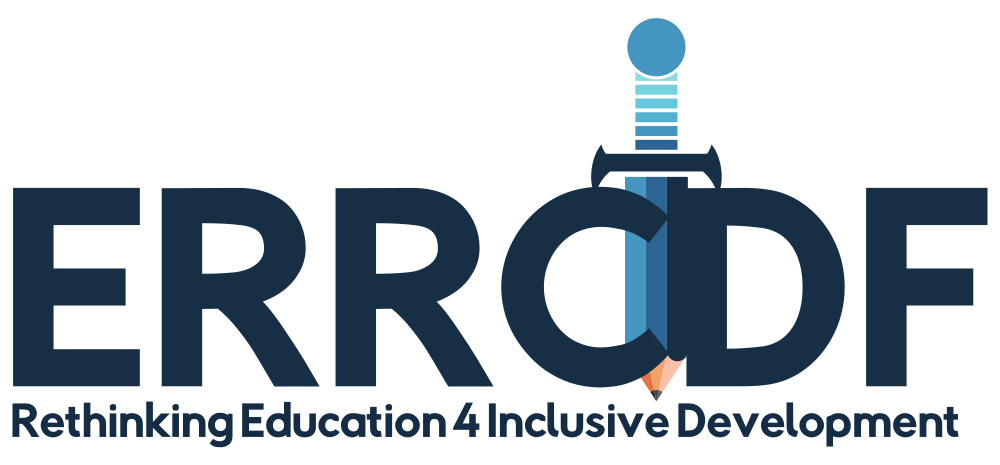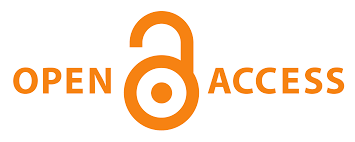Sustaining Learning during COVID-19 Seismic Shift: The Need to Develop Flexible Pedagogy
DOI:
https://doi.org/10.51986/ijer-2021.vol3.01.02Keywords:
COVID-19 pandemic, emergencies, pedagogy, learning styles, connectivismAbstract
This study examines the impact of COVID-19 pandemic on educational system; investigates how meaningful learning is promoted and continued despite the unprecedented global challenges; and investigates if the channels through which learning is promoted cater for students' learning styles. Two hundred and one secondary school students selected from Ekiti State, Nigeria, participated in the descriptive research study. A validated questionnaire was used to gather data from the respondents. The study found out that the learning channels mostly employed during the pandemic were television stations, school on-air via radio programme, virtual learning, and private teaching. The findings revealed that respondents had no preference for specific perceptual learning styles but embraced different learning channels employed. They modified their learning styles and developed flexibility in learning. A recommendation was provided that new viable policies that promote diverse learning opportunities and alternative learning strategies capable of mitigating the present and future academic obstructions should be made and diligently implemented. This paper concludes that during future emergencies, diverse learning platforms, channels, and digital media employed for learning should cater to students' learning styles: visual, auditory, tactile, kinesthetic, group, and individual. It is noteworthy that learners would learn better if they are exposed to varieties of teaching/learning media.
References
Adeniran, A. & Obiakor, T. (2020). COVID-19: Impending situation threatens to deepen Nigeria's education crisis. Centre for the Study of the Economies of Africa. Retrieved from: https://media.africaportal.org/documents/COVID-19-Impending-Situation-Threate ns-to-Deepen-Nigerias-Education-.pdf
Aljaafreh, A. & Lantolf, J. (1994). Negative feedback as regulation and second language learning in the zone of proximal development. The Modern Language Journal, 78(4), 465-483.
Almarzooq, Z., Lopes, M., & Kochar, A. (2020). Virtual learning during the COVID-19 Pandemic: A disruptive technology in graduate medical education. Journal of the American College of Cardiology, 75, 2635–2638. https://doi.org/10.1016/j.jacc. 2020.04.015
Banas, R.A. (2018). Perceptual learning styles of students and its effect to their academic performance. International Journal of Trend in Scientific Research and Development, 3(1), 401-409.
Bell, F. (2009). Connectivism: a network theory for teaching and learning in a connected world. Retrieved from: http://usir.salford.ac.uk/2569/1/ConnectivismEdDev.pdf:public
Daud, S., Kashif, R., & Chaudhry, A. (2014). Learning styles of medical students. South East Asian Journal of Medical Education, 8(1), 40-46.
Diez-Gutierrez, E. & Gajardo-Espinoza, K. (2020). Educar y Evaluar en Tiempos de Coronavirus: la Situación en España. Multidisciplinary Journal of Educational Research, 10(2), 102-134. http://dx.doi.org/10.447/remie.2020.5604
Di Pietro, G., Biagi, F., Costa, P., Karpi?ski Z. & Mazza, J (2020). The likely impact of COVID-19 on education: Reflections based on the existing literature and international datasets. EUR 30275 EN, Publications Office of the European Union, Luxembourg. https://doi.org/10.2760/126686
Dube, B. (2020). Rural online learning in the context of COVID-19 in South Africa: Evoking an inclusive education approach. Multidisciplinary Journal of Educational Research, 10(2), 135-157. http://dx.doi.org/10.447/remie.2020.5607
Education in Emergency Working Group (2020). Nigeria education sector COVID-19 response strategy in North East. Retrieved from: https://reliefweb.int/sites/reliefweb.int/files/ resources/nigeria_education_sector_covid-19_response_strategy_ north_east_.pdf
Ellis, R. (1989). Classroom learning styles and their effect on second language acquisition: A study of two learners. System, 17(2), 249-262.
Futurelab (2010). Developing the home-school relationship using digital technologies. Retrieved from: https://www.nfer.ac.uk/publications/FUTL13/FUTL13.pdf
Ghillebaert, F. (1999). Teaching reading skills through technology: "king", an annotated version with Libra software. In Renou (nd). A study of perceptual learning styles and achievement in a university-level foreign language course. Retrieved from: http://crisolenguas.uprrp.edu/ Articles/JanetRenou.pdf
Grasha, A. F. (1996). Teaching with style: A practical guide to enhancing learning by understanding teaching and learning styles. Pittsburgh: Alliance Publishers.
Huang, R.H., Liu, D.J., Amelina, N., Yang, J.F., Zhuang, R.X., Chang, T.W. & Cheng, W. (2020). Guidance on active learning at home during educational disruption: promoting student's self-regulation skills during COVID-19 outbreak. Beijing: Smart Learning Institute of Beijing Normal University. Retrieved from: https://iite.unesco.org/wp-content/ uploads/2020/04/Guidance-on-Active-Learning-at-Home-in-COVID-19-Outbreak.pdf
Inclusive Education Initiative (2020). Pivoting to leveraging lessons from the COVID-19 crisis for learners with disabilities. Washington, DC: World Bank Publications. Retrieved from: http://pubdocs.worldbank.org/en/147471595907235497/IEI-Issues-Paper-Disability-Inclusive-Education-FINAL-ACCESSIBLE.pdf
Karthigeyan, K. & Nirmala, K. (2013). Learning style preference of English language learners. Educationia Confab, 2(1), 134-140. https://doi.org/10.1177/2158244018809408
Keane, D. T. (2012). Leading with technology. The Australian Educational Leader, 34(2), 44.
Kho, M.G. (2018) Analysing students' perceptual learning styles at a polytechnic in Malaysia. Retrieved from: https://seminar.utmspace.edu.my/Ispgabc2018/Doc/7.pdf
Kinsella, K. (1995). Understanding and empowering diverse learners in ESL classrooms. In J. M. Reid (Ed.), Learning styles in the ESL/EFL classroom. Boston: Heinle & Heinle Publishers.
Learning must go on: recommendations for keeping children safe and learning, during and after the COVID-19 crisis. Retrieved from: https://resourcecentre.savethechildren.net/sites/ default/files/documents/learning_must_go_on-advocacy_briefing_april_2020.pdf
Lizote, S.A., Alves, C.R., Teston, S., & Olm, J.W. (2019). Learning styles, academic performance and teaching evaluation. Revista Catarinense da Ciência Contábil, 18, 1-15. https://doi.org/10.16930/2237-766220192837
McCarthy, B. (1987). The 4mat system: Teaching to learning styles with right/left mode techniques (rev. ed.). Barrington, Illinois: Excel Inc. In Morgan, L. (1995). Learning styles in the classroom. University of Lethbridge Research Repository: Theses & Projects.
Mehrdad, A. G. & Ahghar, M.R. (2013). EFL students' language learning preferences at Islamic Azad UniversityHamedan Branch. Procedia - Social and Behavioral Sciences, 93, 102 – 106.
Melese, A.A. (2018). Relationships among perceptual learning styles preferences and academic achievement of students at Woldia College of Teachers Education, Ethiopia. Global Journal of Human-Social Science: G Linguistics & Education, 18(4), 34-39.
Ming-Hung, L., Huang-Cheng, C., & Kuang-Sheng, L. 2017. A study of the effects of digital learning on learning motivation and learning outcome. Eurasia Journal of Mathematics Science and Technology Education, 13(7), 3553-3564.
Morgan, L. (1995). Learning styles in the classroom. University of Lethbridge Research Repository, Theses & Projects.
Morgül, E., Kallitsoglou, A. & Essau, C.A. (2020). Psychological effects of the COVID-19 lockdown on children and families in the UK. Revista de Psicología Clínica con Niños y Adolescentes, 7(3), 42-48. https://doi.org/10.21134/rpcna.2020.mon.2049
Muir, D.J. (2011). Adapting online education to different learning styles. National Educational Computing Conference Proceedings (22nd, Chicago, IL, June 25-27, 2001). Retrieved from: https://files.eric.ed.gov/fulltext/ED462940.pdf
Mugizi, W., Rwothumio, J. & Amwine, C. M. (2021). Compensation management and employee wellbeing of academic staff in Uganda private universities during COVID-19 Lockdown. Interdisciplinary Journal of Education Research, 3(1), 1-12. https://doi.org/10.51986/ijer-2021.vol3.01.01
Omodan, B. I. (2020a). Managing the psycho-social vacuum of COVID-19 among rural learners through Ubuntu. Journal of Educational and Social Research, 10(6), 266-278. https://doi.org/10.36941/jesr2020-0125
Omodan, B. I. (2020b). The vindication of decoloniality and the reality of COVID-19 as an emergency of unknown in rural universities. International Journal of Sociology of Education. 20, 1-26. http://doi.org/10.17583/rise.2020.5495
Onyema, E.M., Nwafor, C. E., Obafemi, F.A., Sen, S., Atonye, F.G., Aabha, S. & Alsayed, A.O. (2020). Impact of Coronavirus pandemic on education. Journal of Education and Practice, 11(13), 108-120.
Pia, A. A. (1989). Preferred perceptual learning styles of Chinese students. Dissertations and Theses.Paper 3918. Retrieved from: https://pdxscholar.library.pdx.edu/cgi/viewcontent. cgi?article= 4927&context=open_access_etds
Pinchot, J. & Paullet, K. (2014). Different keystrokes for different folks: addressing learning styles in online education. Information Systems Education Journal, 12(2), 29-37. Retrieved from: https://files.eric.ed.gov/fulltext/EJ1140787
Raskind, M. (1994). Assistive technology for adults with learning disabilities: A rationale for use. In Toquero, C. 2020. Inclusion of people with disabilities amid COVID-19: Laws, interventions, recommendations. Multidisciplinary Journal of Educational Research, 10(2), 158-177. http://dx.doi.org/10.447/remie.2020.5877
Reid, J. (1987). The learning style preferences of ESL students. TESOL Quarterly, 21(1), 87-110.
Reid, J. (1995). Learning Styles in the ESL/EFL Classroom. Boston: Heinle & Heinle Publishers.
Renou, J. (nd). A study of perceptual learning styles and achievement in a university-level foreign language course. Retrieved from: http://crisolengaus.uprrp.edu./ ArticlesJanetRenou.pdf
Rezaeinejad, M., Azizifar, A. & Gowhary, H. (2015). The study of learning styles and its relationship with educational achievement among Iranian high school students. Procedia - Social and Behavioral Sciences, 199, 218 – 224.
Sarker, M. Wu, M., Cao, Q., Alam, G., & Li, D. (2019). Leveraging digital technology for better learning and education: A systematic literature review. International Journal of Information and Education Technology, 9(7), 453-461.
School Drug Education and Road Aware (2013. Challenges and choices: resilience, drug and road safety education. Foundation: teaching and learning strategies, 161-182. Retrieved from: http://www.sdera.wa.edu.au/media/1235/teaching-and-learning-strategies.pdf
Seah, M.K.T. (2020). COVID-19: Exposing digital poverty in a pandemic. International Journal of Surgery, 79, 127-128. https://doi.org/10.1016/j.ijsu.2020.05.057
Siemens, G. (2005). Connectivism: A learning theory for the digital age. Retrieved from: https://jotamac.typepad.com/jotamacs_weblog/files/Connectivism.pdf
Sharp, A. (2004). Language learning and awareness of personality type in Chinese settings. Retrieved from: http://www.asian-efl-journal.com.
Thakur K. (2014). A constructivist perspective on teaching and learning: A conceptual framework. International Research Journal of Social Sciences, 3(1), 27-29.
United Nations (2020). Policy brief: The impact of COVID-19 on children. Retrieved from: https://unsdg.un.org/sites/default/files/2020-04/160420_Covid_Children_Policy_Brief.pdf
United Nations (2020). Policy brief: Education during COVID-19 and beyond. Retrieved from: https://www.un.org/development/desa/dspd/wp-content/uploads/sites/22/2020/08/sg_ policy_ brief_covid-19_and_education_august_2020.pdf
US Department of Education, Readiness and Emergency Management for Schools Technical Assistance Center (2020). Coronavirus disease 2019 (COVID-19): Key preparedness and response considerations. Retrieved from: https://rems.ed.gov/docs/COOPTAon ContinuityofTeaching_and_Learning_COVID 19.pdf
VanderArk, T. & Schneider, C. (2012). How digital learning contributes to deeper learning. Retrieved from: https://www.gettingsmart.com/wp-content/uploads/2012/12/Digital-Learning-Deeper -Learning-Full-White-Paper.pdf
Verma, A. & Prakash, S. (2020). Impact of COVID-19 on environment and society. Journal of Global Biosciences, 9(5), 7352-7363.
Vygotsky, L. S. (1978). Internalisation of higher psychological functions from mind in society. Cambridge, MA: Harvard University Press.
Wilson, C. (2020). COVID-19, digital inclusion and online education: APO digital inclusion collection brief. Analysis and Policy Observatory & Centre for Social Impact Swinburne. http://doi.org/10.25916/5e9e335249684
World Health Organization (2015). Assistive technology for children with disabilities: Creating opportunities for education, inclusion and participation, a discussion paper. Retrieved from: http://www.unicefinenergencies.com/downloads/eresource/docs/Disability/Assistive -Tech-Web. pdf
Zhou, M. (2011). Learning styles and teaching styles in College English teaching. International Education Studies, 4(1), 73-77.
Downloads
Published
How to Cite
Issue
Section
License
Copyright (c) 2021 Folasade Esther Jimola, Graceful Onuvughe Ofodu

This work is licensed under a Creative Commons Attribution-NonCommercial-NoDerivatives 4.0 International License.










